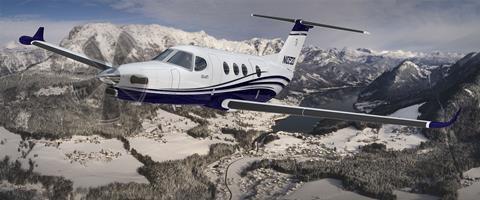GE Aviation is nearing a maiden sortie of its Catalyst turboprop engine, delays to which have had a knock-on impact on Cessna’s in-development Denali.
A first flight of the new engine was due earlier this year aboard a Beechcraft King Air 350 twin-turboprop, but the event slipped.

GE now says the milestone “will soon follow” and delivery of the first engine to power the Denali “is planned for later this year”.
It adds: “GE’s Catalyst programme continues to move forward with engineering and certification testing. To date, Catalyst has more than 1,800 hours of combined operation and 11 engines assembled.” The engine specialist has previously promised that 10 test engines would be flying this year.
While the Catalyst is due to make its operational debut aboard the single-engined Denali, the manufacturer is clearly also pushing the 850-1,650shp (630-1,230kW) powerplant for military applications.
An article on the website of GE subsidiary Avio Aero identifies potential for the Catalyst to be used on trainer aircraft and unmanned air vehicles, noting that its 100% European pedigree means the engine is not subject to International Traffic in Arms Regulations export restrictions.
“It is precisely because of its possible military applications that significant European collaborations have emerged, including those with MT-Propeller and Aciturri,” the article says.
Spanish firm Aciturri was added to the programme in June and under the agreement is exploring the potential manufacture of certain of the Catalyst’s components, Paolo Salvetti, sales director for military applications of the Catalyst engine at Avio Aero, writes on social media site LinkedIn.
Should the agreement with Aciturri move forward – worth a potential €30 million ($35 million), says Salvetti – it would add another country to those already involved in the project, which include companies in the Czech Republic, France, Germany, Italy and Poland.
While GE has not confirmed an interest in the programme, the heavy emphasis on the pan-European nature of the Catalyst could see it offered as a powerplant for the twin-engined medium-altitude, long-endurance UAV being jointly developed by France, Germany, Italy and Spain.
If it is proposed, the engine would face competition from the 1,700-2,000shp Ardiden 3TP being developed by Safran Helicopter Engines.
Safran has also been expanding European participation in the programme and recently added Spanish propulsion specialist ITP Aero to its team via a memorandum of agreement.
















































